What’s your favorite thing about summer fly fishing? It’s a hard question to answer because there are so many amazing aspects that accompany hot summer days on the river, but if we had to pick, ours would be chucking big hopper and stimulator patterns against the bank. With hoppers and stimulators, you experience aggressive surface takes that are etched into your memory forever without the hassle of trying to keep your eye on a #22 Parachute Adams. Another perk is they aren’t just a summer staple, these patterns are also a hot commodity during the early part of fall. Until we receive several consecutive nights with freezing temperatures, terrestrials will continue to be active. So, until that happens, keep your box stocked with hoppers and stimulators.
To help you make the most of the fading hopper season, we put together our top tips for fishing hoppers and partnered with Anglers All to showcase some of their fan favorite patterns. As an added bonus, Anglers All agreed to give FlyCast followers 20% off hoppers and stimulators purchased online through the end of September, 2020. To take advantage, click the link below and use promo code: FlyCastFlyPromo at checkout.
Tips:
- Pound the Banks: Unlike the other bug species we imitate throughout the year, terrestrials and stoneflies hatch/live outside of the water. Bushes, trees and other structures along banks are where many of these bugs can be found. When these bugs fall into the river, they make a splash and drift along the bank. Knowing that, the bank is where you want to focus when fishing these patterns. While you can certainly find an opportunistic trout willing to eat a hopper in the middle of the river, we’ve found that drifting your hopper within 5 – 7 ft from the bank is ideal and will lead to more action.
- Learn to Love “W”: Just like Harry Potter fans refuse to say the name, Voldemort, anglers avoid saying the word, wind. While it may be superstition, anglers will do anything to avoid conjuring wind while fishing. Ultimately, mother nature has her own plans but luckily, hopper season is a decent time to encounter wind. When wind picks up, it has a tendency to knock stoneflies and terrestrials off of the grass, bushes, trees and rocks that they cling onto. So, if you’re fishing on a windy summer or fall day, break out a hopper. Fish it tight to the bank and don’t be afraid to make a splash. This will get the attention of trout looking up and hopefully lead to aggressive surface eats.
- Partner Up: The beautiful thing about fishing hoppers is they’re easy to see and track in the water. Compared to small baetis and midge dry fly patterns, these are a blessing to your eyes. But sometimes, you can’t avoid fishing smaller patterns and if you have a hard time tracking them, rigging up a double dry fly setup and trailing your small dry fly 12+ inches behind a hopper is an effective strategy. If trout are feeding on smaller flies, your hopper will act as an indicator and help you track the drift. Best case scenario, trout are feeding on both patterns and you double your odds of catching fish.
- Create Movement: In general, dry flies are most effective in a dead drift. With hoppers and stimulators, you have more options. A dead drift is always a smart approach, but if you’re having a hard time getting the trout’s attention, skating or twitching the fly can be very effective. To do this, cast towards the bank and within three seconds of the fly hitting the water, give your line two short strips or flick your wrist downstream a couple times. This will make the trout think the bug is alive and struggling to get out of the water.
Patterns:
Chubby Chernobyl – This pattern is arguably one of the most popular hopper patterns in the Western US. Imitating both stoneflies and grasshoppers, it’s a dual threat during the summer and fall. The Chubby Chernobyl comes in various colors, contains flash, creates movement in the water with its rubber legs and is highly buoyant.
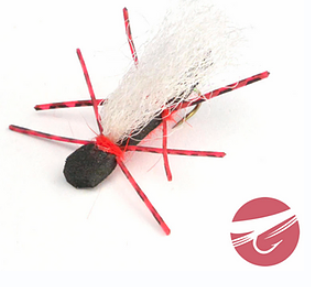
Grillo’s Hippie Stomper – Aside from having a fantastic name, the Hippie Stomper is a must have. Compared to other hopper patterns, it has a smaller profile but floats incredibly well and has enough buoyancy to tow multiple nymphs.
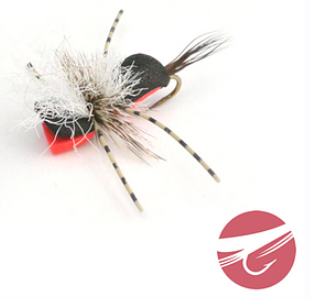
Amy’s Ant – The Amy’s Ant is a fantastic terrestrial pattern for all types of water. We’ve had success fishing this fly on small creeks, technical tailwater's, large freestones and alpine lakes. Its buggy shape and the disturbance the rubber legs make on the surface make it irresistible to trout looking up at the surface for a hearty meal.
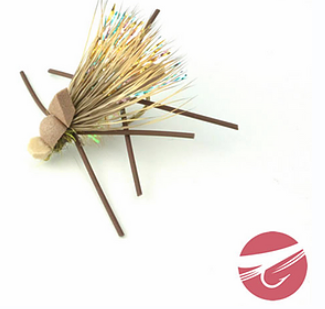
Parachute Hopper – The Parachute Hopper is a classic that can be found in most fly boxes across the US. Compared to the patterns above, the Parachute Hopper is a more imitative pattern that will fool even the most selective trout.
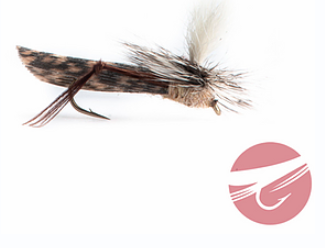
Morrish Hopper – This is a relatively simple looking pattern, consisting of only foam and rubber legs, but its profile is dead on. The Morrish Hopper is a dense pattern that rides low in the surface film rather than high on the surface. Anglers can effectively fish this pattern in a dry dropper setup or on its own. If you fish it solo, don’t be afraid to give it a few jiggles or skate it away from the bank.
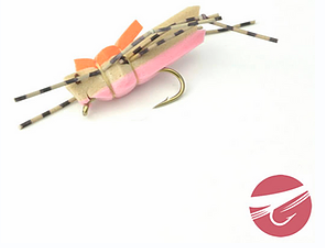
Paramore’s Thunder Thighs Hopper – ‘Ol Thunder Thighs will rarely let you down whether you’re fishing small creeks, large rivers or alpine lakes. This pattern does an incredible job imitating a juicy hopper and trout looking up at the surface won’t be able to resist. When casting to a bank, let this fly make a splash and be prepared for an aggressive take.

